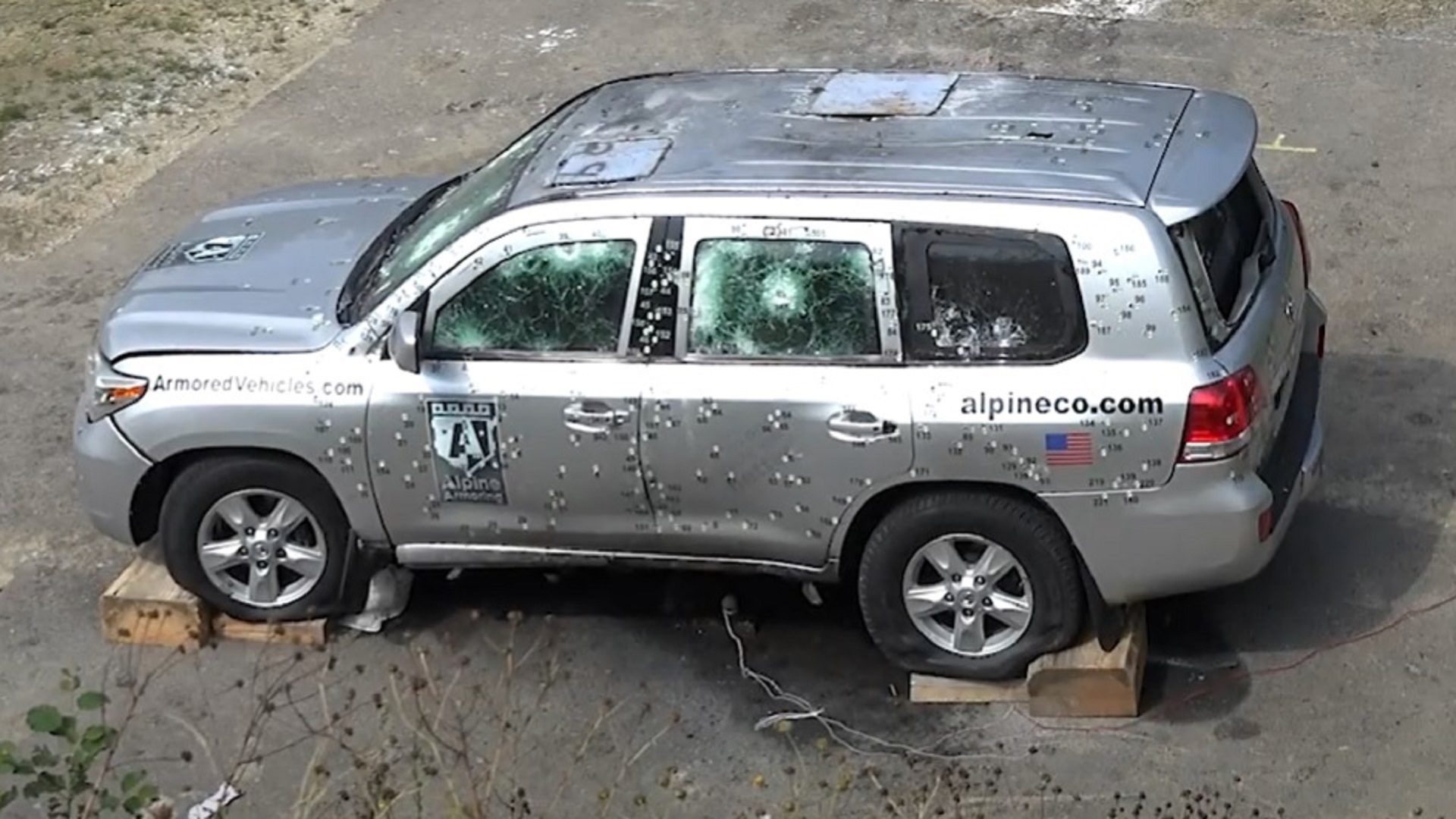

Armadillos wear their armor on the outside. Turtles carry theirs on their back. Knights were clad in chain mail and armor to defend them during jousting tournaments and in battle. Armored vehicles, on the other hand, wear their protection on the inside, and if the job is good you won’t be able to tell an armored vehicle from a typical one. If I were James Bond, I’d like the idea of an armored Ferrari 458 Speciale to not only fend off .44 Magnum rounds but get me the heck out of there faster than, say, an armored SUV.
Technically, you can armor any vehicle you want. If you dream about an armored Chevy HHR, you can make that happen for about $80,000 with Alpine Armoring, a firm based in the D.C. area. The company seems like a good bet; of thousands of vehicles armored so far, not a single incident of armor penetration has been reported. Presumably, Elon Musk didn’t use this company for the Cybertruck’s armored windows that failed onstage during a live demo.

If you find that you are regularly engaging in heavily-armed car chases like the ones in 6 Underground, armoring could be a smart investment for you. (Did you see the opening sequence in the Alfa Romeo Giulia Quadrifoglio, by the way? It’s epic.) Alpine’s client list includes the usual suspects like the U.S. military, embassies, VIPs, foreign militaries, law enforcement agencies, and corporations. The company is also a registered and certified contractor for the United Nations and U.S. Department of Defense.
For Alpine Armoring to suit up a vehicle, they strip it down to the bare steel or aluminum and go from there. Even before that, though, the engineering team takes on the big job of making all of the calculations before the armoring is added. Finding the center of gravity both before and after the build is key, and the weight of the vehicle, coil spring stiffness, pendulum weight, and more are factored in. In the case of some aluminum-bodied vehicles, engineers have to figure out how to overcome the challenge of applying steel armoring since you can’t weld the two metals together. Plus, aluminum tends to buckle under the weight of heavier steel.
“The more time you spend doing the design, the better it will be in the end,” Dan Diana from Alpine Armoring told me.
Armoring for sports cars might include Dyneema, which is a composite Polyethene material that’s about ¼ the weight of ballistic steel, and/or Kevlar. Dyneema is thick, however, and that makes it harder to reinstall the upholstery to original OEM specs. Alpine Armoring prefers what they call “tried-and-true” lightweight ballistic steel as their bread and butter. Depending on the protection level, about 1500 pounds may be added to the vehicle, and on military-type trucks, the added weight would be much more. They also complete a stress analysis before and after armoring to ensure that it’s not only bulletproof but still handles safely on the road with the added weight. The additional heft must be below the gross vehicle weight rating of the vehicle to be armored.

In general, it takes six to eight weeks to armor typical vehicles like a Mercedes-Benz, Range Rover, Escalade, Tahoe, or Suburban. Once the design and CAD files are complete, the build happens pretty quickly, Diana says. Using vehicles they have armored before keeps the timeline moving forward because fitting it to an untested firewall can be a pain. Some vehicles have odd-shaped firewalls, and fitting ballistic steel between that and the dash is difficult. The company has a comprehensive armoring level chart to help you see quickly if you need protection from a .38 Special or multiple rounds of a .50-caliber rifle and every Kalashnikov in between. I have a hard time wrapping my mind around that kind of firepower.
Installing no-spall (shatterproof) ballistic glass is also demanding because the smallest action can cause chemical reactions or cracking. There are two types of glass: one is flat glass, which is what you see on SWAT vehicles, Brinks trucks, and so on, and those are easy. Crafting curved ballistic glass, which is what allows an armoring company to keep its original look and feel, is a more time-consuming and tricky process. The materials make up many layers that work together to prevent rounds from penetrating the vehicle’s glass panels.
Alpine is the largest armored vehicle rental company in the world, and they have a stock of armored vehicles because of a VIP decides they want one, they want it at the snap of a finger. Training is available to improve your evasive driving maneuvers and what to do in hijacking situations if you’re in the business of protecting and serving the peace or you’re a super-rich movie villain. For the most part, though, average people who want an armored vehicle need to remember that it’s akin to adjusting your driving habits if you’re carrying a heavy payload or towing a trailer, paying attention to the speed limit, leaving more stopping distance, and approaching curves with care.
However, for the average person, driving an armored car (SUVs and sedans) requires little training and a lot of common sense. Considering the vehicle’s weight is nearly 20 to 40 percent heavier, the driver should use extra caution in stopping distances, when going around curves, and maintaining at or below the maximum road speed at all times. Keep that in mind, Agent 007.
Got a tip? Send us a note: tips@thedrive.com



